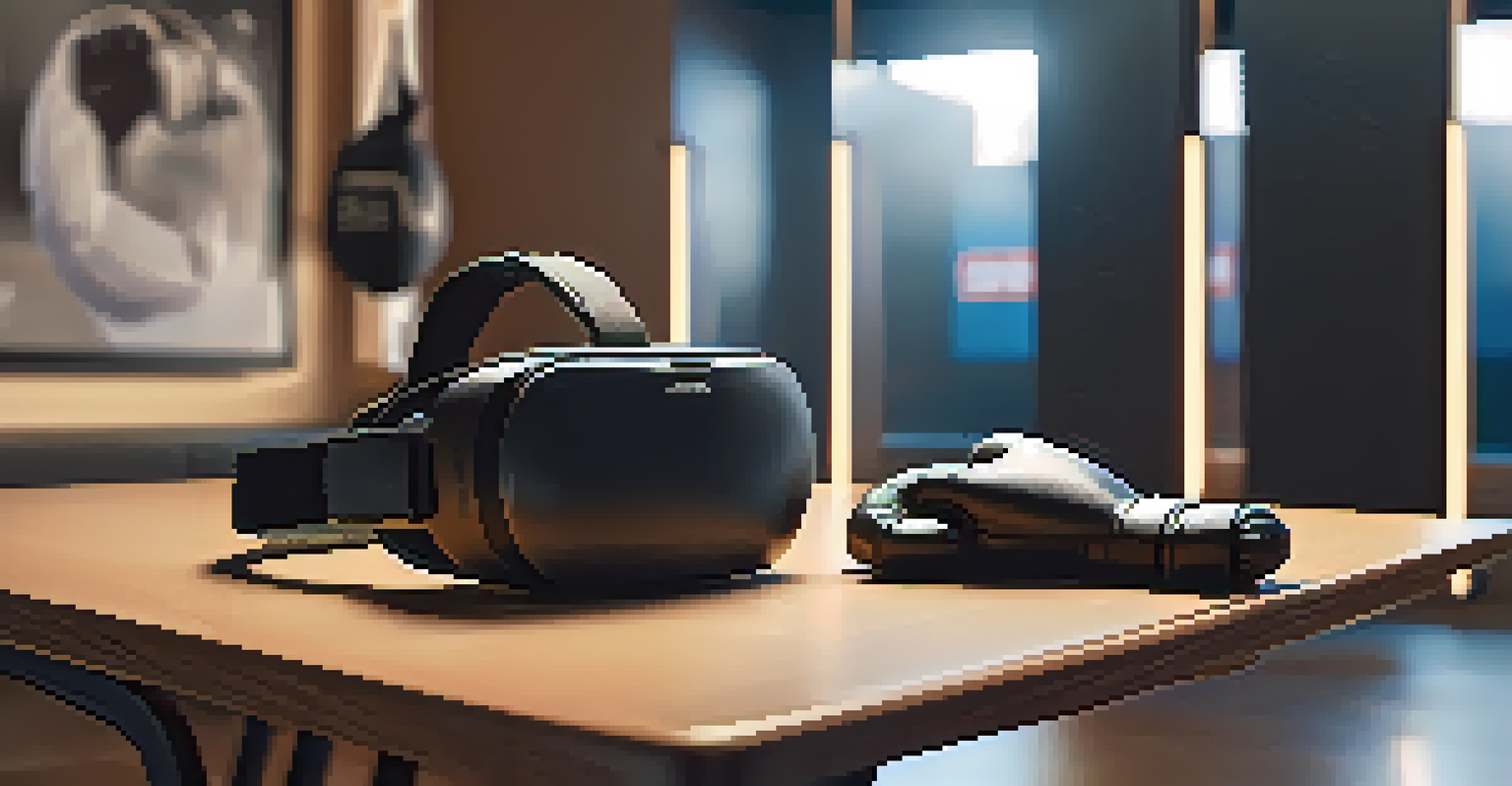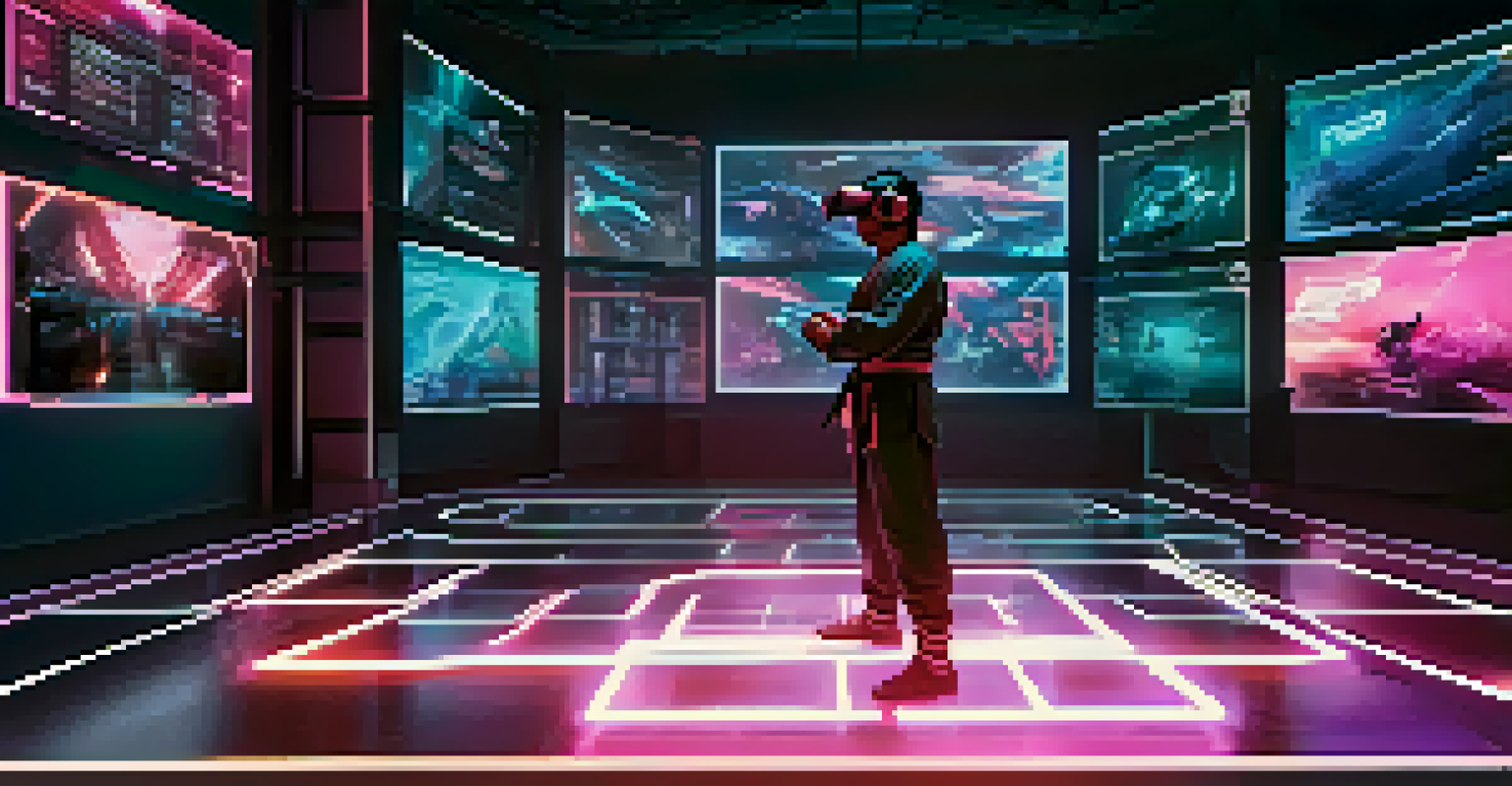How Virtual Reality is Transforming Martial Arts Training Sessions

Introduction to Virtual Reality in Martial Arts Training
Virtual reality (VR) is rapidly changing the landscape of various training programs, and martial arts is no exception. By immersing practitioners in lifelike scenarios, VR offers a unique way to learn techniques, strategies, and even the mental aspects of martial arts. Imagine stepping into a digital dojo where you can train with virtual opponents, honing your skills without the risk of injury.
The future of training is virtual, and martial arts will be at the forefront of this revolution.
This innovative approach allows martial artists to practice their moves in a controlled environment, making it easier to repeat techniques until they become second nature. The adaptability of VR also means that students can train at their own pace, engaging with the material in a way that suits their learning style. This personalized experience is a game-changer for many practitioners.
Moreover, VR can replicate various environments and conditions, adding an extra layer of challenge. Whether it's simulating a crowded tournament or a one-on-one sparring match, the possibilities are endless. This not only prepares martial artists for real-life scenarios but also keeps training sessions exciting and engaging.
Enhanced Skill Development Through Realistic Simulations
One of the primary benefits of VR in martial arts training is its ability to create realistic simulations. Practitioners can face virtual opponents that adapt to their skill level, providing a more dynamic training experience. This adaptability helps martial artists develop their timing, distance management, and overall strategy in a safe environment.

For instance, a beginner can practice fundamental techniques against a less skilled opponent, while more advanced practitioners can challenge themselves with highly skilled virtual fighters. This tailored approach ensures that students are constantly pushed to improve, regardless of their current skill level. It's like having a personalized coach available 24/7.
VR Enhances Martial Arts Training
Virtual reality provides a controlled environment for martial artists to practice techniques, strategies, and mental toughness without the risk of injury.
Additionally, VR can analyze a participant's performance, offering instant feedback that is crucial for improvement. This data-driven approach allows martial artists to identify areas that need work, making their training sessions more productive. The combination of realistic simulations and immediate feedback creates an effective learning environment.
Building Mental Toughness with Immersive Experiences
Martial arts is as much about mental fortitude as it is about physical skill. Virtual reality can help practitioners build mental toughness by immersing them in high-pressure situations. Facing virtual opponents while under pressure can simulate the stress of a real match, helping students learn to stay calm and focused.
Virtual reality is not just a tool; it's a new way to experience learning and growth.
In this immersive environment, martial artists can practice visualization techniques, preparing for competitions or sparring sessions without the physical risks. This mental preparation can significantly enhance performance when facing real-life opponents. It’s akin to a mental rehearsal, providing a competitive edge.
Furthermore, the emotional engagement that VR offers can boost motivation and commitment to training. By replicating the excitement and intensity of live sparring, practitioners are more likely to stay engaged and push through challenges. This psychological aspect is vital for long-term success in martial arts.
Accessibility and Inclusivity in Training
Virtual reality opens up martial arts training to a broader audience, making it more accessible than ever. For those who may not have access to local dojos or experienced instructors, VR provides an alternative way to learn and practice. This is especially beneficial for individuals living in remote areas or those with mobility challenges.
Moreover, VR can cater to various skill levels, ensuring that everyone, from beginners to seasoned martial artists, can find value in the training. By offering a wide range of programs and scenarios, virtual reality democratizes martial arts education, allowing more people to experience its benefits.
Personalized Learning Experiences
With VR, practitioners can train at their own pace and receive instant feedback, making skill development tailored and effective.
This inclusivity fosters a sense of community among practitioners, as they can share experiences and progress through online platforms. The ability to connect with others who share similar goals, regardless of geographical barriers, creates a supportive training environment.
Incorporating Gamification for Increased Engagement
Gamification is a powerful tool in training, and virtual reality leverages this by turning practice into a game-like experience. Features like scoring, levels, and competitions can transform traditional training sessions into engaging challenges. This not only makes learning more fun but also encourages practitioners to hone their skills in a playful manner.
For example, martial artists can earn points for completing challenges or achieving specific techniques, making the training process feel rewarding. This intrinsic motivation can lead to increased dedication and persistence, qualities that are essential for mastering martial arts.
Additionally, friendly competitions can foster camaraderie among users, as they can challenge friends or fellow students in virtual sparring sessions. These social interactions enhance the training experience, making it more enjoyable and less isolating, especially for those who train alone.
Safety Considerations in Virtual Reality Training
While virtual reality offers numerous benefits for martial arts training, safety remains a critical concern. Practitioners should ensure they are training in a safe environment where they can move without the risk of injury from physical obstacles. Proper setup and space management are essential to prevent accidents during VR sessions.
Moreover, it’s important for users to take breaks during training to avoid fatigue or motion sickness, which can occasionally occur with prolonged VR use. By listening to their bodies and pacing themselves, martial artists can make the most of their virtual training without compromising their well-being.
Inclusivity and Community Building
Virtual reality makes martial arts training accessible to individuals in remote areas or with mobility challenges, fostering a supportive online community.
Lastly, practitioners should supplement VR training with traditional methods to maintain a balanced skill set. While VR can enhance certain aspects of training, it’s vital to engage in real-life sparring and drills to develop physical instincts and adaptability. Combining both approaches leads to well-rounded martial artists.
The Future of Martial Arts Training with Virtual Reality
As technology continues to evolve, the future of martial arts training looks promising with the integration of virtual reality. Innovations in VR hardware and software will likely lead to even more immersive and realistic experiences. This evolution could further bridge the gap between traditional training and modern technology, enhancing the way we approach martial arts education.
In the coming years, we can expect to see more advanced AI opponents that learn and adapt to individual training styles, providing an even greater challenge. This level of personalization could revolutionize how martial artists prepare for competitions and refine their techniques.

Ultimately, the combination of virtual reality and martial arts training promises to create a more effective, engaging, and inclusive learning environment. As more practitioners embrace this technology, the martial arts community will continue to grow and evolve, welcoming new enthusiasts and elevating the art form.